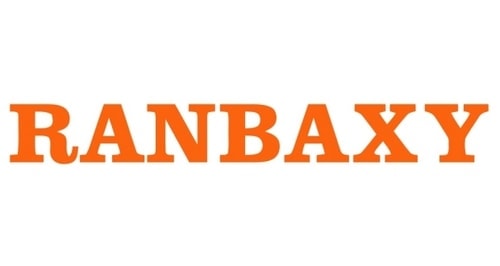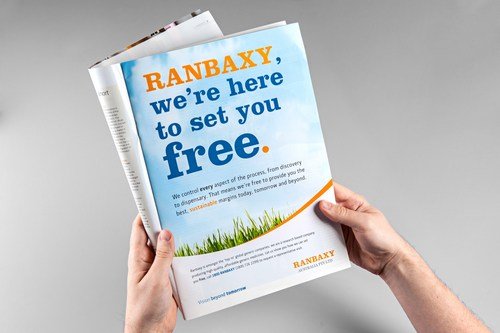The Marketing mix of Ranbaxy analyses the 4Ps of Ranbaxy, including the Product, Price, Place, and Promotions. Ranbaxy Laboratories Limited is associated with the Pharmaceutical Industry and deals in the healthcare sector. It is a publicly-traded company of Indian origin. Ranbaxy was founded in 1961 and, in 2014, became a subsidiary of its parent company, Sun Pharmaceuticals. Efficient technologies, low production cost, a large workforce pool, and skilled technical power have helped it achieve tremendous success and recognition in the world market. Currently, the conglomerate has become the fifth largest Pharma Company in the world in terms of specialty brands and generic products. Some of its competitors are as follows-
- GlaxoSmithKline Pharmaceuticals Ltd
- Lupin
- Dr Reddy’s Laboratories Ltd
- RPG Enterprises
- Dabur India Ltd
- Khandelwal Laboratories Ltd
- Concept Pharmaceuticals Ltd
- Cipla Ltd
About Ranbaxy
- Type: Pharmaceutical company
- Industry: Healthcare
- Founded: 1937
- Founder: Ranbaxy family
- Headquarters: Gurgaon, India
- Area served: India and internationally
- Key people: Sunil Munjal (Chairman) and Vikas Seth (CEO)
- Number of employees: 16,000
Table of Contents
Ranbaxy Product Strategy
Ranbaxy is a multinational company that manufactures and distributes healthcare products. It is engaged in research-based operations of qualitative generic medications. Ranbaxy deals in target market segments like nutritional, gastrointestinal, pain management, neuro-psychiatry, dermatological, diabetes, cardiovascular and anti-infective.
Ranbaxy Laboratories Limited, before its acquisition by Sun Pharma, was a prominent Indian pharmaceutical company.
The new Product Mix of Ranbaxy in 2023 is as follows (Source).
- Generic Drugs: Ranbaxy was known for its extensive range of generic medications. These drugs are bioequivalent to brand-name drugs but are sold under their chemical names and typically at lower prices. The range included generics across various therapeutic areas.
- Active Pharmaceutical Ingredients (APIs): The company was involved in manufacturing and supplying APIs, which are the essential ingredients in the production of drugs. These APIs were used not only for their formulations but were also sold to other pharmaceutical companies.
- Over-the-counter (OTC) Medications: Ranbaxy offered a selection of over-the-counter medications without a prescription available to consumers. These products included pain relievers, cold and cough remedies, and gastrointestinal treatments.
- Antiretroviral Drugs: The company was particularly noted for its production of antiretroviral drugs used to treat HIV/AIDS. Ranbaxy played a significant role in providing affordable antiretroviral drugs in developing countries.
- Research and Development: Although not a product category in the traditional sense, Ranbaxy firmly focused on research and development, working on new drug discoveries and formulations, which was a crucial part of their business strategy.
Ranbaxy Place Strategy
Ranbaxy has the distinction of being the largest Pharma Company in India. It has an international presence and has spread to one hundred and twenty-five countries worldwide. Its headquarters base is at Gurgaon in Haryana. Ranbaxy’s manufacturing plants are located in eight countries and manages ground operations in forty-three countries. In 1973, it set up a plant in Lagos, Nigeria, via a joint venture and a manufacturing plant in Mohali. In 1983 and later in 1987, manufacturing facilities were set up at Dewas and Toansa in Punjab, respectively. It entered China with a joint venture to set up the plant in Guangzhou and later established regional headquarters at Raleigh in the United States and London in the United Kingdom.
Ranbaxy Laboratories Limited, during its operational years before merging with Sun Pharma, implemented a more strategic marketing and expansive place strategy to distribute its pharmaceutical products globally:
- Global Manufacturing and Distribution Network: Ranbaxy established a vast network of manufacturing facilities across various countries, including India, the United States, Brazil, and South Africa. This global footprint allowed the company to produce and distribute products in key markets worldwide efficiently.
- Strategic Location of Facilities: The company strategically located its manufacturing units close to significant markets or regions offering operational advantages, such as lower production costs or favorable regulatory environments. This strategy helped optimize logistics and reduce time-to-market for its products.
- Partnerships and Alliances: Ranbaxy formed strategic alliances and partnerships with local and international pharmaceutical companies. These collaborations enhanced its distribution reach, especially in markets where it did not have a direct presence.
- Robust Supply Chain Management: Efficient supply chain management was critical to Ranbaxy’s place strategy. The company invested in technology and processes to ensure timely delivery, quality control, and cost efficiency in its supply chain operations.
- Regulatory Compliance Across Markets: Ranbaxy paid close attention to regulatory compliance in different countries. Adhering to diverse regulatory standards enabled the company to maintain its market presence and credibility across various international markets.
Ranbaxy Pricing Strategy
Ranbaxy has targeted potential customers of wholesalers, hospitals, generic distributors, and healthcare professionals. It is a company that has put its onus on meeting the needs and requirements of patients. Revenues are integral to any organization’s marketing strategy, and Ranbaxy depends on its generic division for revenue generation. It produces generic medicines at a meager cost compared to its rival companies, which has helped it gain further markets. It has also increased its efforts to increase revenues through dosage-forms sales. Ranbaxy has maintained a reasonable pricing policy. Low production costs and affordable prices have helped the company earn more significant profit margins.
As a leading pharmaceutical company, Ranbaxy Laboratories Limited employed a nuanced pricing and marketing strategy that reflected its position in the global market and the unique nature of the pharmaceutical industry:
- Competitive Pricing in Generic Markets: Ranbaxy adopted a competitive pricing strategy in the generics market, where competition is intense. The company aimed to capture and maintain significant market share by offering high-quality generic drugs at affordable prices, especially in price-sensitive markets.
- Cost-Plus Pricing for Manufacturing: Ranbaxy likely used a cost-plus pricing strategy for its manufacturing services, including producing Active Pharmaceutical Ingredients (APIs). This involved marking up the cost of production to ensure profitability while remaining competitive in the contract manufacturing market.
- Dynamic Pricing Based on Market Conditions: Recognizing the diverse nature of global markets, Ranbaxy employed dynamic pricing strategies that varied depending on regional market conditions, competition, drug demand, and regulatory environment. This flexibility allowed the company to optimize its pricing in different markets effectively.
- Penetration Pricing for New Markets: Ranbaxy sometimes uses penetration pricing when entering new markets or launching new products. This involved setting lower initial prices to quickly build a customer base and market presence, particularly in emerging markets.
- Value-Based Pricing for Innovative Products: Although primarily known for generics, Ranbaxy also invested in research and development. For its innovative drugs or unique formulations, the company could adopt a value-based pricing approach, setting prices based on the perceived value to the patient or healthcare system, especially in markets where such innovation was scarce.
Ranbaxy Promotion Strategy
Ranbaxy has implemented several marketing management plans to increase its brand awareness. Its tagline is descriptive and signals the mindset of the company. Some popular ones are Trusted medicines, healthier lives, new boundaries, and new horizons. Ranbaxy has received numerous accolades and awards in recognition of its works.
In 2002-03, it received The Company of the Year award for Corporate Excellence by The Economic Times. In the year 2011, the OTC Company of the Year award was given to Ranbaxy Global Consumer Health Care, and in years 2012, 2014, and 2013, it was ranked 161st, 184th, and 225th, respectively, as the Most Trusted Brand in India.
Some Recent Video ads and Print ads for Ranbaxy are:
https://youtu.be/NRO7S4qOKLE
Liked this post? Check out the complete series on Marketing Mix

